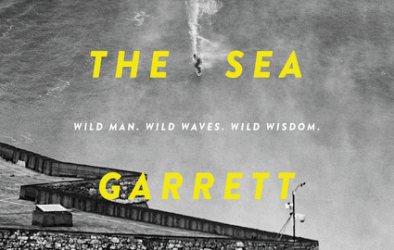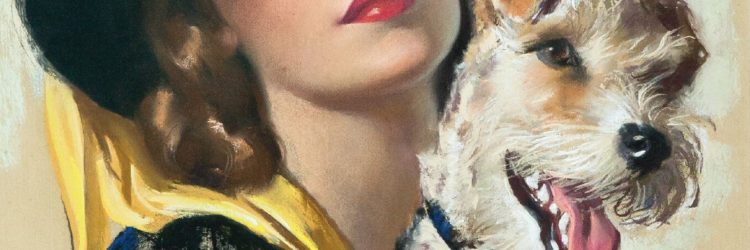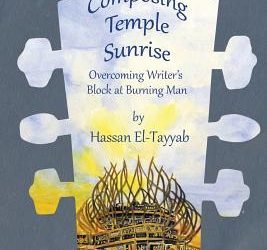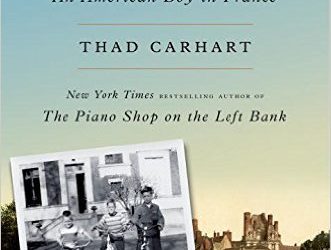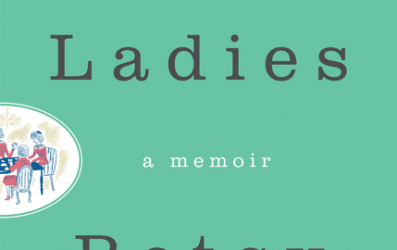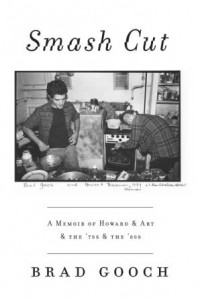About the book Love in the Elephant Tent 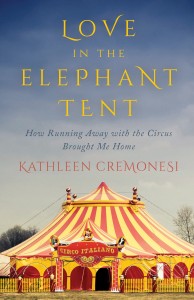
- Hardcover: 400 pages
- Publisher: ECW Press (May 12, 2015)
f you live life without a net, what happens when you fall?
Kathleen Cremonesi knew early on she wanted to be different. Determined to avoid following in her mother’s footsteps to an ill-fated marriage, Kathleen left Oregon in her early 20s to travel across Europe. On a whim, this former administrative assistant with wanderlust took a job as a dancer in an Italian circus and, working her way up, became an ostrich-riding, shark-taming showgirl.
Kathleen bonds with the exotic animals that could strike and kill at any moment, but instead bring her a peace she has never known. And when she stumbles into the arms of Stefano, the sexy elephant keeper, she finds a man who understands her wild spirit.
With thrilling prose and vivid descriptions, Kathleen takes the reader around the Mediterranean, where she discovers unexpected friends and learns how to cook, forgive, and love — across language barriers.
Buy, read, and discuss Love in the Elephant Tent
Amazon | ECW Press | Goodreads
My Thoughts 
I love memoirs and autobiographies, but I always feel a bit weird about reviewing them, as if I’m passing judgement on the person’s life, rather than just their book. In this case, however, I was enthralled by the author, Kathleen Cremonesi, herself and by the manner in which she tells her story. Truly, I wish I could sit down and share a cup of coffee or a beer and some vegan pizza with her.
If you didn’t know this was a memoir, you would probably think Love in the Elephant Tent was a novel with a first-person POV. At times it reads like one: a young woman from an unconventional (but loving) family leaves home and spends several years exploring the world – college, being a groupie for the Grateful Dead, backpacking (and fruit picking) around Europe, and finally landing at a circus, where she’s hired as a kitchen helper and swing for the dancing girls, and ends up falling for the elephant trainer (and his elephants). I mean – no one’s actual life could be that eventful and interesting…could it?
But Kathleen’s life was that eventful and interesting, and she tells her story candidly, building a slow crescendo to the peak of her involvement with the circus and Stefano, and then letting us down slowly through the next phase of her life, only to repeat the process.
As a performer myself, and one who cut her teeth in improv, I have a special fondness for circus stories, because a lot of the same skills that apply to improv also apply to things like clowning, or, really, to any kind of live performance. That Kathleen’s story also involves a lot of cooking dovetails nicely, because what is cooking, really, but kitchen improv and kitchen chemistry, combined?
If you love the circus, you will love this memoir. If you hate this circus, you will still love this memoir. If you have ever wanted to blow off your real life and go join the circus (please, don’t…it’s NOT as fun as it sounds) you will learn a lot from this memoir and then you will curl up in your bed, surrounded by clean sheets and stable electricity, and be glad that, for you, the circus is just a fantasy.
Kathleen Cremonesi should consider writing fiction. Or another memoir. Or something. Her writing voice is as interesting and rich as the experiences she shares in this book. She may have found love in the elephant tent; I found a fascinating woman in the pages of a book.
Goes well with pasta, cooked al dente with homemade ragu.
Q&A with the author, Kathleen Cremonesi 
Kathleen, for people who haven’t yet read LOVE IN THE ELEPHANT TENT, give us your “elevator speech.” (If you were introducing yourself to other passengers in an elevator car, what would you say?)
Imagine My Big Fat Greek Wedding crashing into Eat, Pray, Love on the set of Water for Elephants. Love in the Elephant Tent is a coming-of-age adventure and an intimate portrayal of young love, where Kathleen and Stefano learn to navigate their cultural differences, shed youthful concepts of romance, and form a life-long bond.
A lot of people fantasize about running away to join the circus, but you actually did it, if not entirely purposefully. What advice would you offer to others who have that fantasy?
That’s a great question, Melissa. Most important: either be fully aware of what you’re getting into or be ready and willing to dive into anything. Circus life is not for anyone who is queasy, lazy, or unable to adapt to whatever life throws their way. The other element I would mention is to know how you feel about using exotics and other animals in that sort of atmosphere. If you don’t believe that any animal should live in those conditions, then you’re bound to have your heart broken daily if you find yourself in an animal-centric circus.
Can you describe a typical day in your life?
The best thing about the circus for me was that nothing about it was typical. The worst thing about the circus is that everything was typical! As I explain in Love in the Elephant Tent, living in the circus was like twirling around on a carousel – spinning, spinning, spinning through ever-changing scenery, yet everything within my immediate reach never seemed to change a bit.
Every morning, I’d make breakfast for the exotic animals, perhaps run to the grocery store or do some other shopping, return to the circus for lunch, prepare the afternoon meal for the exotic troupe, and get ready for the show – which usually started at 4:00 pm unless it was a Sunday or holiday schedule. Once the show started, that was everyone’s focus until it ended – which was around 11 pm. Sometimes we’d head out for a bite to eat or drinks, but usually it was straight to sleep so we could get up bright and early and do it all over again. And again. And again.
Because we were always on the move, we often set up in half a dozen or more towns every month. One day, I might perform those duties in the shadow of a Roman ruin; another day I might be surrounded by dilapidated apartments or a snowcapped alpine mountain range. But the circus has a way of complicating things. No matter where we were, the element of surprise hovered over our every move. Animals escaped. Weather didn’t cooperate. People were injured. Toss in some oversized personalities, and you have… well, a circus!
A few years ago, I had the opportunity to interview Johnathan Lee Iverson, one of the Ringling Bros. ringmasters. He gave a list of the way circus life is different from the “real” world:
“…-Don’t mean to brag, but, sometimes I feel like I live in an alternate universe…
-In your world women are still struggling to make head way in the work place, in mine they run the show from top to bottom….
-In your world diversity is still an issue, in mine every hue can be seen and over 10 different nations convene daily
-In your world parents are overworked and clueless about their kids, ours are at arm’s length 24/7 even when they’re in school…”
I’d love to know if you agree or disagree with those points, and if so why/why not?
Wow. He definitely lived in an alternate universe from the one I experienced. We lived in different circuses in different countries, but that may not be what’s behind our varied experiences. My guess is that it had to do with our position within the circuses we lived in.
In the two European circuses I experienced, when women were out front, it was only in image, and only in form-fitting or skin-baring costumes. The men ran the business, top to bottom, front to back.
I can agree with Mr. Iverson that many diverse nations convened daily on the circus lot, but they were not on equal footing. It is my experience that one’s position in the circus was based on first: who you were (family, nationality, gender); second: what you contributed to the circus (management, artist, back-up performer, grunt); and third: how well you provided that service.
In Italy’s Circo Moira Orfei, where I spent over 2 years, there were workers from many countries, including Italy, Spain, Germany, Bulgaria, Russia, Mexico, Yugoslavia, Morocco, Tunisia, Egypt, India…
Upper management was all family. Then came general management: all Italian, but not necessarily family.
Artists were almost always European, though Moira’s circus had a liaison with the Russian Circus Federation at the time, so we also had a selection of Russian performers. I recall only one performer outside of Europe and Russia, and he was a Mexican trapeze artist.
Back-up performers (dancers) were usually wives or daughters of other performers and higher-up workers (Italian employees, crew captains, etc.). That’s how I was allowed into the performance ring: my then-boyfriend, Stefano, was Italian and a crew captain, so I was invited to be a part of the show. Other women were not. There were many Polish women who worked there, and their jobs were limited to such positions as seamstress or laundry duties. I recall a beautiful Moroccan girl who worked there at the same time I did – she washed pots in the kitchen.
As far as those workers in charge of their crews (animal crews, big-top crews, or the mechanical crews), 99% were European – mostly Italian with a few Germans thrown in. The other 1% consisted of one Egyptian and one Indian worker who had both been there many years and had proven their loyalty and their worth, so each of them were treated a little better than your average grunt.
And the grunts – well, few of them lasted long enough to make much of a life out of the circus. Many were illegal workers, and life was tough for them. Really tough. Pay was next to nothing. Stefano, who was a better-paid Italian crew-captain, earned around $20/day plus room and board for working an average of 16 hours and being on call 24 hours a day.
My apologies if I’ve gone on too long here, but the inequality I saw in the circus between men and women, family and outsiders, Europeans and Third-World workers, is still fresh in my mind, even after 25 years.
One thing I can agree with Mr. Iverson on is how families lived closely with each other. As far as the parents being overworked or not, well, that depends on what the parent did for a living and what the circus Gods decided to dish out on that particular day. But whatever it was, their kids were right there beside them, whether it was feasting on seaside delicacies when the circus set up beside the Mediterranean, slogging through knee-deep mud trenches when torrential rains flooded the lot, or keeping the elephant tent from collapsing on the animals in a wind storm.
The use of animals in circuses is not without controversy. The Big Apple Circus, for example, uses only those animals that have always been ‘working’ animals (horses and dogs). Ringling Bros. recently announced that they’re phasing out their elephant acts. As someone who has worked with these animals, how do you feel about their use in the entertainment industry?
I feel even more strongly about how poorly animals were treated, but I’ve just gone on at length about how I felt about the Third-World workers were treated, so let me just say that the animals’ lives were worse. I believe that no exotic animals, or caged domestic animals, should be part of a traveling show. Even if an animal isn’t whipped into submission (and beatings certainly happen in such situations), I believe that it is a serious form of abuse to keep them in such confines. For instance, wild elephants have been known to roam up to 50 miles a day, yet the 13 elephants in the two circuses I worked in were usually kept chained to wooden decks for over 23 hours a day. Who in their right mind can say that such treatment is ethical?
When writing a memoir there’s always a balancing act between being true to the story and being respectful of the real people involved. Did you find yourself struggling at all with that when you wrote LOVE IN THE ELEPHANT TENT?
Absolutely. As tough as it was to write intimate details about myself, it was perhaps even more so to write them about others. But I believe that I have a right to share my story – which I couldn’t do without sharing at least a portion of others’ lives as well. To my knowledge, the only secrets I exposed were my own.
In a perfect world, everyone in the book would have had the opportunity to read what I wrote and respond – correct potential inaccuracies, offer a counter opinion – and some were given that opportunity. Unfortunately, my Italian is no longer good enough to translate the nuances of my English prose, so it was difficult for me to offer the same opportunity to those who do not read English well. Some of them know about the book, some do not. I don’t expect all of them to welcome its existence, or to agree with my version of events. But no matter what I thought about them or their actions during the period of my life this book covers, I tried to be fair and accurately represent everyone and the events that took place.
Is there anything you really wanted to include in the book, but had to cut because of length or story flow? If so, can you share?

Of course! I condensed two and a half years into fewer than 400 pages, so there are many, many events that were left out – some of which were written and then cut from the book at some point, and some that never made it onto paper. Most significant, I suppose, are the two months I spent between my arrival in Europe in early October and when I joined the first circus in December. Without those experiences, I never would have joined the circus and had the opportunity to fall in love with Stefano.
What one thing do you hope readers will take away from their experience with LOVE IN THE ELEPHANT TENT?
How vital it is for them to get out in the world and discover who they are, what’s important to them, and how they’re going to achieve it day-to-day. To live an authentic life, whether it’s in their hometown or across the world. To Be Here Now, take life one day at a time. To find that moment when the past falls away and the present is all there is, all that matters.
But most of all, to open their heart to love – whether friendly, familial, or romantic love – and keep it open, even when the going gets tough.
What’s next for you?
I suppose that depends on how Love in the Elephant Tent makes its way into the world. I certainly love to write and there are always those stories from my first months in Europe – not to mention my adventures while following the Grateful Dead around the U.S. Perhaps there will be more interest in what took place between when Stefano and I arrived in the U.S. in 1991 and today… or some of the interesting family members from past generations. I think I’m more inclined to write non-fiction, and I’ve already written stories from all of the above periods, so it really depends on what might spark readers’ – and my own – interest.
I also love to travel and write about food, so I could be perfectly happy spending some time researching my next project, one that has nothing to do with my past, sampling life’s flavors in some exotic locale.
But that’s not to say there’s only writing in my future. I feel so strongly about keeping elephants and other exotics out of the circus that I’d gladly spend some time promoting such a cause if the opportunity arises.
Connect with Kathleen
Website | Facebook | Twitter
Kathleen Cremonesi’s Blog Tour Stops 
June 15, 2015: Review and Giveaway, Always Packed for Adventure (http://www.alwayspackedforadventure.com/).
June 17, 2015: Review and Excerpt, Book Bug (http://bookbug2012.wordpress.com).
June 18, 2015: Review and Q+A, The Book Binder’s Daughter (http://thebookbindersdaughter.com).
June 19, 2015: Review, Excerpt and Giveaway, Caffeine and Books (https://caffeineandbooks42.wordpress.com/).
June 22, 2015: Review and Excerpt, Fictional Real World (http://www.fictionalrealworld.blogspot.ca/).
June 24, 2015: Review and Photos, We Peas Read (https://wepeasread.wordpress.com/review-policy/).
June 26, 2015: Review and Q+A, Bibliotica (http://bibliotica.com).





